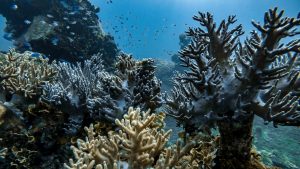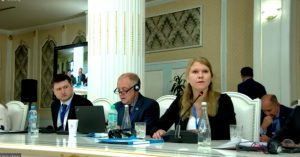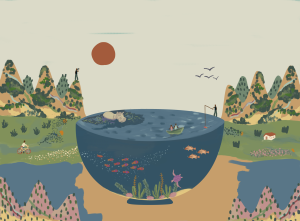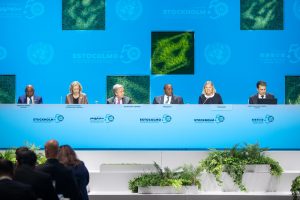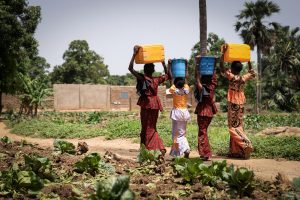Valuing Wasted Water
The value of water, specifically the water we waste – was the topic of this Water Dialogue. The need for both innovation and behavioral change were among the conclusions our speakers discussed when exploring water’s value.
For the third edition of our Water Dialogues, Swedish Water House was joined by Anisa Philasouk and Sittiphon Pathammavong, Laos’ Stockholm Junior Water Prize national finalists in 2020. They were joined by Biotech pioneer Mark van Loosdrecht, the Stockholm Water Prize Laureate in 2018, he received the prize with Bruce Rittmann. The audience was guided through the discussion by Hans Bertil Wittgren, head of research and development at VA SYD.
Inspired by a disaster
The topic of wastewater is important for several reasons. Anisa and Sittiphon explained how the intense drought that hit Laos in 2019, inspired them to purify and reuse wastewater from households. The 16-year-old students from Vientiane used local materials, such as alum, hydrated-lime and charcoal to remove the smell and discolor of the water. They discussed other issues which inspire them to make change such as garbage management and air pollution. As students, they are trying to make change through raising awareness of the problem, in order to inspire others to take action.
The chameleon of wastewater
How can the sludge from wastewater become valuable? Mark van Loosdrecht, professor in biotechnology at the University of Delft, in the Netherlands, explained that the technique which he developed, extracts gel- or algae-like material. The Kaumera system, the name of which means “chameleon” in the Mauri language, is a true example of versatile usage. The extracted material can be used in agriculture, since it has a water binding capacity. Kaumera can change the textile industry: it makes fabric absorb the dye more efficiently, thus reducing the volume of water needed in production. It is also a non-flammable material (up to 1500°C), which makes it usable in both textiles and construction production.
“We might have found a material that we can take out of the sludge, which has a certain market value, and which can make treatment plants financially stable in itself and not depend on governments’ tax systems”, said Mark. There is no market for this material yet, but the aim is to establish a market, which will financially support the treatment plants, in a true circular economy.
Making value visible
Despite great innovation, some things in the world still do not change. One issue is that human behavior is very difficult to change, which the panelists also touched upon. Anisa and Sittiphon have seen a change in behavior in their friends and family: people are cautious to not waste as much water now. Mark reflected on how change is adopted within the wastewater field and brought up an important factor, namely the improved understanding of biology and microbiology and how this is important for how processes are designed and looked upon by society.
Mark also talked about how the discussion on the value of water is changing. Despite that most people value water as a basic human right, there is a debate regarding if there should or should not be a fee connected to water management. One side argues that a basic human right should not be obliged with a financial cost, and the other views the financial cost as an incentive for water users to realize the value of water and not spill it in vain. The idea of a cost is not to make profit, but to make the value visible to the users.
Despite working on different scales, both Mark and Anisa and Sittiphon showed that innovation will only take us thus far: we need to change people’s behaviors in order to create sustainable change. This is true both for individual water users, as well as the decision-makers in society.

